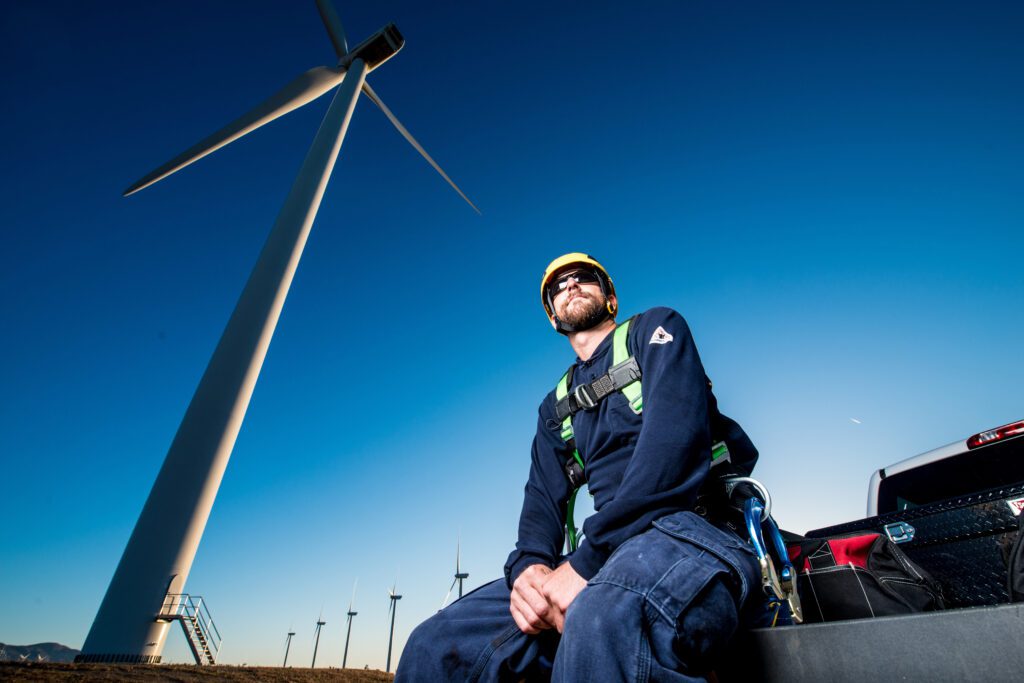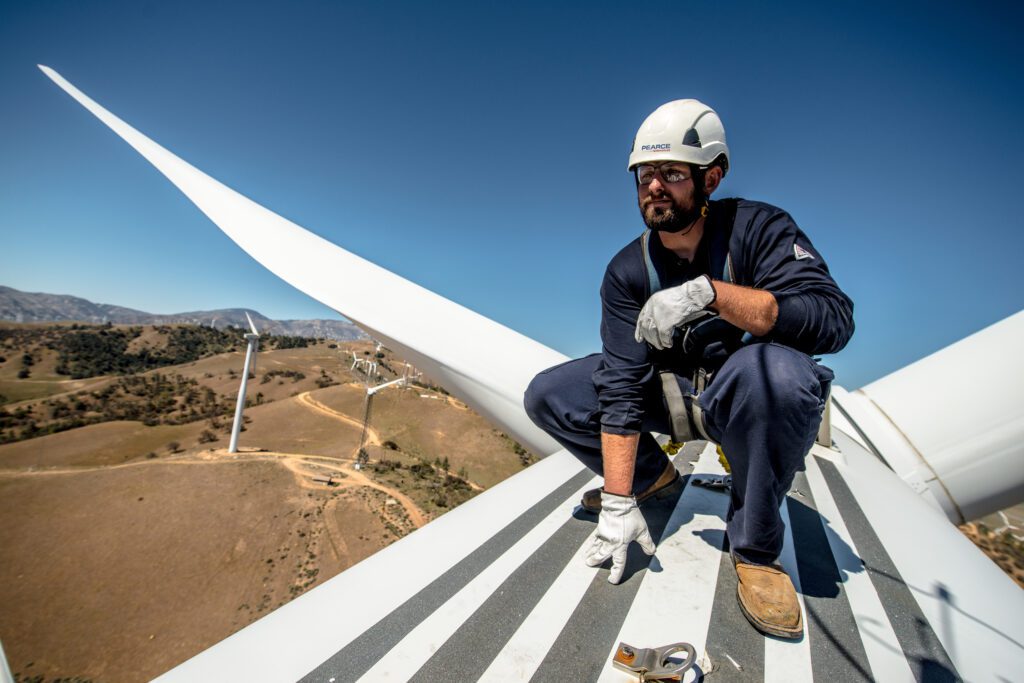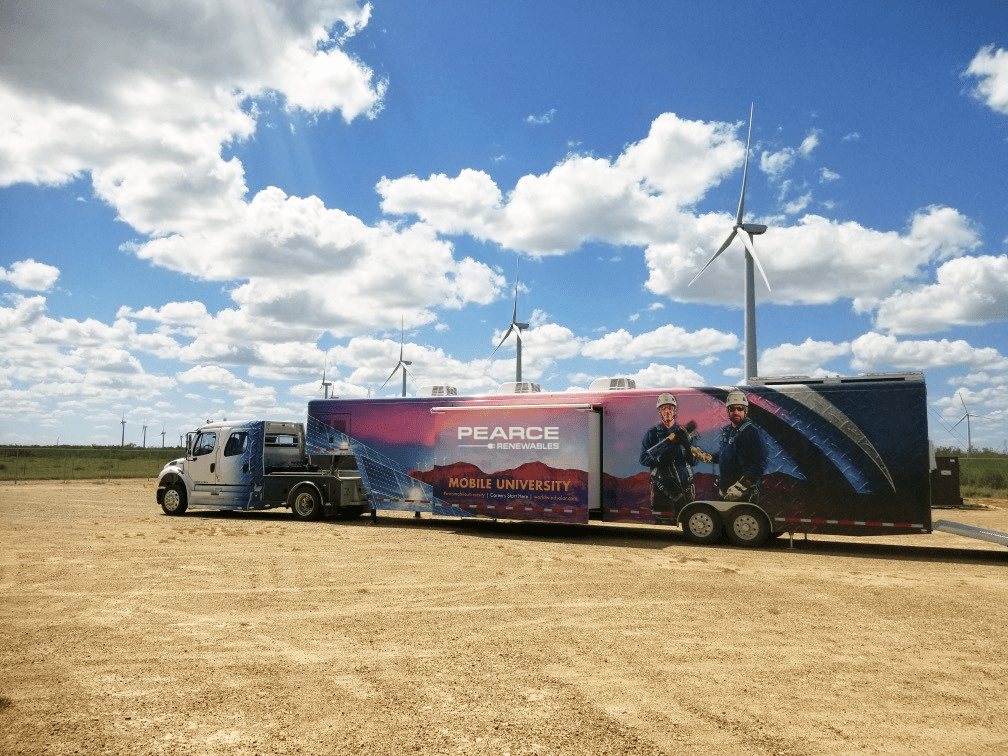Ways to Address the Wind Power Technology Talent Gap
In the face of climate change and clean energy mandates, the demand for affordable, resilient and renewable wind energy is set to accelerate. While it took the global wind energy sector 40 years to reach one terawatt (TW) in installed capacity, expected by the end of this year, it will take just eight years to reach the next TW, according to a recent market outlook report.
COMMENTARY
As the wind industry picks up speed, wind turbine service technician (Figure 1) is projected to be the second-fastest growing occupation in the U.S. through 2031. Wind tech training challenges are on the rise, too. In the U.S. alone, more than 50,000 technicians will require C&I and O&M training from 2022 to 2026.
While some wind techs enter the field with a trade school certificate, often just a high school diploma and some relevant work experience are enough to enter the trade. But mastering advanced wind service takes years, requiring long-term on-the-job training, as well as multiple industry certifications.

With ever-evolving technology and a relentless focus on safety and quality, workforce development training falls heavily on the employer’s shoulders. For independent service providers (ISPs) and asset owners alike that’s a hefty investment, which is compounded by higher-than-average turnover rates.
For forward-thinking ISPs the challenge is an opportunity to close the wind tech training gap. Adopting scalable best practices in safety and technical training creates a workforce that’s highly skilled, versatile and more retainable.
Embrace GWO Standardized Training
The job of a wind technician has its share of safety hazards, from climbing towers soaring to 200 feet or higher (Figure 2) to reach the nacelle, to using hand and power tools to make adjustments for repairs, to getting involved in high-voltage operations. Training is mission-critical in mitigating safety risk.
The Global Wind Organisation (GWO) sets the bar when it comes to training standards for a safer and more productive workforce. Yet, fewer than 10 ISPs in the U.S. are GWO-training certified.

What do ISPs and asset owners gain by embracing GWO training certification? Not only do they enable an industry-wide safety culture, they also ensure consistency of competences across teams, which can reduce costs, time, and travel while avoiding duplication of training efforts. And, according to GWO, for companies that have the GWO framework, reduced duplication of training has improved productivity by allowing technicians to be available for work, in some cases by as much as five to six additional work days every year.
Standardized safety training certification also creates a more mobile workforce. As the industry grows, standardization enables wind techs to grow with it by making it easier to transfer to other teams, companies, or even opportunities in other countries. That makes the industry more scalable.
ISPs and asset owners don’t need to scrap their existing training to become GWO-certified. They can have their training audited, complete gap training, and convert their employees’ training to a GWO certificate.
Create Career Ladders
It’s easy to see that when an ISP spends thousands of dollars training a wind tech, turnover can be both frustrating and costly. Of course, some turnover is to be expected. Roughly 6 of 10 wind techs are travelers, typically spending six weeks on the road followed by six days at home. It’s a grueling schedule and a lifestyle not sustainable to everyone, with average retention rates about three to four years.
But retention-savvy O&M service providers are embracing best practices to curtail turnover. Creating career ladders is one proven way.
Career ladders have been around in many industries for decades, outlining the progression from entry-level positions to higher levels of pay, skill, responsibility, or authority. In the growing wind industry, few ISPs have yet to adopt this practice. But for those who have, such as Pearce Renewables, the impact of career progression on retention can be profound. And training is key.
Here’s how it works. An entry-level wind tech who is hired as a Technician I is shown a clear path to progress to the next job grade, including a very itemized checklist that outlines the experience and training needed to progress to Technician II. Technicians then climb the ladder to Technician III and from there to Field Technician. That’s when a wind tech is considered a specialist that basically knows the nuts and bolts of every single turbine on the market.
Once wind techs have progressed to Technician III or Field Technician, they can opt to share their knowledge to train the trainer, which adds to their career growth and fosters the cycle of career progression for less junior technicians. They are also often tapped to coordinate teams, which develops their skillset to be good leaders.
Field Technician is not the top rung of the ladder. Some move on to leadership roles where their know-how of the overall job enhances communication and positions them to be a better remote source of support. Others transcend to roles in project management, tooling, logistics, safety and quality. With the fast-paced industry growth, the sky’s the limit.
Career ladders are a win-win for wind techs, ISPs and asset owners. Wind techs have a clear line of sight to more meaningful work and advancement, which enhances retention. And ISPs are building a pipeline of progressive talent which asset owners can tap into for even their most challenging servicing, training or train-the-trainer needs.
Make it Mobile
Imagine a 34-foot trailer with slide-out extensions pulling up to a wind installation site (Figure 3). Fully equipped, it comes with a classroom, an instructor, and all the equipment needed to conduct AED/CPR training. Just hours later six wind techs are fully certified, or recertified if that’s the case. The operator has successfully satisfied OSHA and other workplace and regulatory requirements, and the technicians are back at work. And the team is prepared to respond with AED and CPR care when needed most.

What if that same mobile unit was also equipped to deliver other types of GWO safety and technical training, Technician II and Technician III career ladder courses? No expensive flights to an off-site training center and multiple days away from the job site. And fewer nights on the road, a thankful relief for road warrior wind techs.
The Mobile University operated by Pearce Renewables is an innovation in workforce development that’s being embraced to its full extent today. Not only do their own tech teams benefit, they are offering mobile training to asset owners to augment training at onsite training facilities for their own teams that need for safety and technical training. It’s convenient, cost-effective, and enhances productivity.
With the demand for wind techs projected to rise 44% from 2010 to 2031, attracting, training, and retaining talent is a challenge that isn’t going away anytime soon. Fortunately as more ISPs adopt best practices like these, the industry will have the wind tech talent needed to meet the escalating demand for clean, resilient wind energy.
—Jason Kuster is vice president of Wind Business Development for Pearce Renewables, one of the nation’s leaders in utility-scale wind power operations and maintenance.